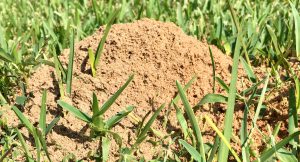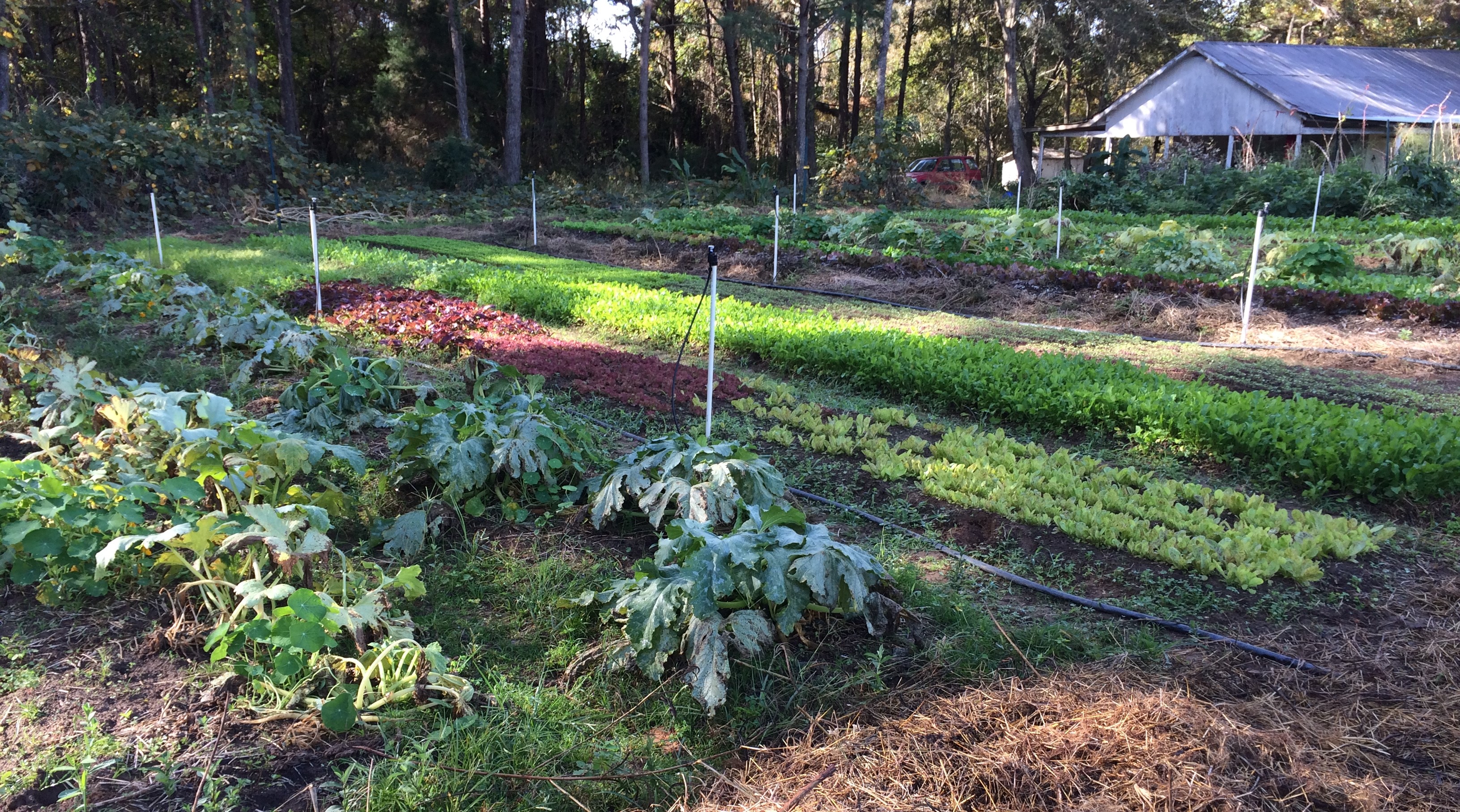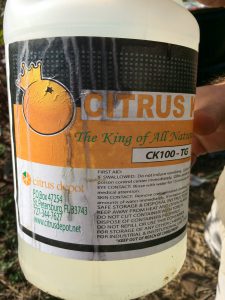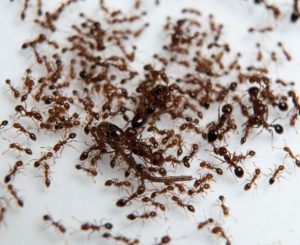
by Larry Williams | Dec 4, 2019
Fire ant control options in some situations include doing nothing.
 Fire ant colonies consist of the brood (eggs, larvae and pupae) and adult ants. The adults include winged males, winged females, one or more egg producing queen and workers. The winged males and females mate in spring or early summer after a rainy period. Males die shortly after mating. Newly mated females can fly as far as twelve miles from the nest (or farther carried by wind). After landing, mated females shed their wings and begin digging chambers in which they lay eggs to start a new colony.
Fire ant colonies consist of the brood (eggs, larvae and pupae) and adult ants. The adults include winged males, winged females, one or more egg producing queen and workers. The winged males and females mate in spring or early summer after a rainy period. Males die shortly after mating. Newly mated females can fly as far as twelve miles from the nest (or farther carried by wind). After landing, mated females shed their wings and begin digging chambers in which they lay eggs to start a new colony.
A single queen can lay over 2,000 eggs per day! She can live an average of six to seven years. A mature fire ant colony may contain 100,000 to 500,000 workers. Fire ant mounds/colonies can reach densities of 200 to 800 per acre.
You should now begin to understand why fire ants are difficult to control. Where they don’t present a direct threat to human health, the best management practice may be to leave them alone.
Homeowners may have to find a tolerable level. Waging war on this insect can be expensive and requires a long-term commitment. There is no single, universal solution to controlling fire ants. A one-time treatment may make the problem worse. In areas where native ants and fire ants have been reduced or eliminated with insecticides, reinfestation by fire ants into these treated areas is rapid.
A balanced approach to fire ant management is recommended. Those mounds that pose no threat to humans should be left alone. Instead target specific mounds such as those close to buildings and walkways.
When treating single mounds with contact insecticides, it’s critical to treat when the queen and brood are close to the surface, which is between 70ºF to 85ºF. When using fire ant baits, it’s important to apply the bait when the ants are foraging for food. They are most actively doing that between 70ºF to 85ºF. Actively foraging ants will pick up the bait and carry it into the nest within minutes. That’s important because baits tend to quickly go rancid and then are no longer attractive to ants. When using season-long control products, it’s a must to achieve uniform coverage of the area. Always read and follow the label precautions and directions when using any insecticide.
Where fire ants create no threat in out-of-the-way areas on your property, consider the option of leaving them alone.
The following link to a UF/IFAS Extension publication provides options for fire ant control in lawns, gardens and landscapes. http://edis.ifas.ufl.edu/lh059

by Molly Jameson | Nov 13, 2017

Take lessons from a farmer to control fire ants in your garden. Photo by Molly Jameson.
As I near the three-year mark of being an Extension Agent, I think about how fortunate I am to have a career that not only encourages me to meet all our local farmers, but also to learn from them and share their knowledge with the community.
A few months ago, I visited Blake Canter of Owen River Farm. Blake gave me the grand tour of his small mixed vegetable plot, which is in far east Tallahassee.
One thing that I remember most about my visit with Blake was what has worked for him in controlling the notorious red imported fire ant (Solenopsis invicta). I have heard of many different ways to control these non-native invaders, each with its drawbacks, and, it seems, anecdotally limited success.
For instance, spinosad, a nervous system toxin, has been known to be effective on fire ant populations and is considered safe to use in vegetable gardens. But in practice, I have heard mixed reviews. In my home garden, I either douse the mounds with boiling water (be careful!) or leave my garden hose in the hot sun and scorch them while the water is still hot. But often, I signal defeat, letting them take captive of two corners of my raised beds.

Blake at Owen River Farm makes his fire ant control mixture by combining commercial grade d-Limonene and a hefty squirt of eco-friendly dish soap into five gallons of water. Photo by Molly Jameson.
Blake’s technique on Owen River Farm is using commercial grade d-Limonene, which is a distilled orange oil nerve toxin. Blake mixes one-third cup of d-Limonene with a hefty squirt of eco-friendly dish soap in a five-gallon bucket of water. He then uses this mixture as a drench for fire ant mounds – which he figures is about as effective as boiling water – but much safer and easier to handle (be sure to follow the label carefully when using any product).
Blake goes out early in the morning (when fire ants move slower and queens are usually higher in their nests) and pours the mixture onto the mounds in a spiral formation, from outside in, to minimize escape. He tries to collapse the mound as much as possible, while pouring slowly so it penetrates deeply, with minimal runoff.
Depending on colony size, Blake uses about half the bucket, or more, on just one mound. He warns that he has lost a cucumber plant that was about a foot away to this method, but he knows the ants will often do even more damage, if not sting and bite (they do both!) him hundreds of times, as he works in his vegetable beds.
Blake likes this method because, “I can specifically target the fire ants, and after doing its job, the all-natural orange oil quickly becomes inert. When I used organic ant bait I found that the native ants took up the poison, often times faster than the fire ants. This was particularly bad because native ants are the number one competition for fire ants.”
Blake also points out, “Make sure anyone you recommend this to can identify the difference between fire ant mounds with no center opening to the mound, and native ant mounds, where there is usually an entrance hole in the center of the mound.”
The hardest part, Blake says, is finding the queens. For instance, he says ants often make auxiliary mounds at the base of okra plants, but this is not where the queen resides. The queen will often be in a central mound many yards away from where her workers are foraging. And, unfortunately, these worker ants love easily habitable soft soil, just like in our raised bed vegetable gardens.

Fire ants in a petri dish. Photo by UF/IFAS.
Despite these challenges, last fall Blake drenched colonies whenever he found a mound around his farm (sometimes daily), and after a few weeks he noticed a drastic reduction in fire ant populations. And happily, an increased population of harmless (and even helpful!) native black ants. His brassica (think kale, collards, broccoli, cabbages) transplants were no longer getting girdled by vicious fire ants and he was no longer ending up with dozens of ant bites every time he worked in his beds!
Blake does warn that you must stay vigilant, especially in the summer and fall and after rain events, when the ants become busy building new colonies.
Lastly, Blake also uses his orange oil mixture as a spray for contact killing ants and other garden pests. However, just as with all horticultural oils and soaps (often made from plant oils, animal fats, or petroleum), care must be taken not to burn the foliage of your crops. Blake will sometimes dilute his mixture for this purpose. But just remember, to really stop an ant infestation, you must take down the queen!
For more information on least-toxic garden pest control strategies, read the UF/IFAS EDIS publication “Natural Products for Managing Landscape and Garden Pests in Florida” available at: https://edis.ifas.ufl.edu/in197.

 Fire ant colonies consist of the brood (eggs, larvae and pupae) and adult ants. The adults include winged males, winged females, one or more egg producing queen and workers. The winged males and females mate in spring or early summer after a rainy period. Males die shortly after mating. Newly mated females can fly as far as twelve miles from the nest (or farther carried by wind). After landing, mated females shed their wings and begin digging chambers in which they lay eggs to start a new colony.
Fire ant colonies consist of the brood (eggs, larvae and pupae) and adult ants. The adults include winged males, winged females, one or more egg producing queen and workers. The winged males and females mate in spring or early summer after a rainy period. Males die shortly after mating. Newly mated females can fly as far as twelve miles from the nest (or farther carried by wind). After landing, mated females shed their wings and begin digging chambers in which they lay eggs to start a new colony. 


